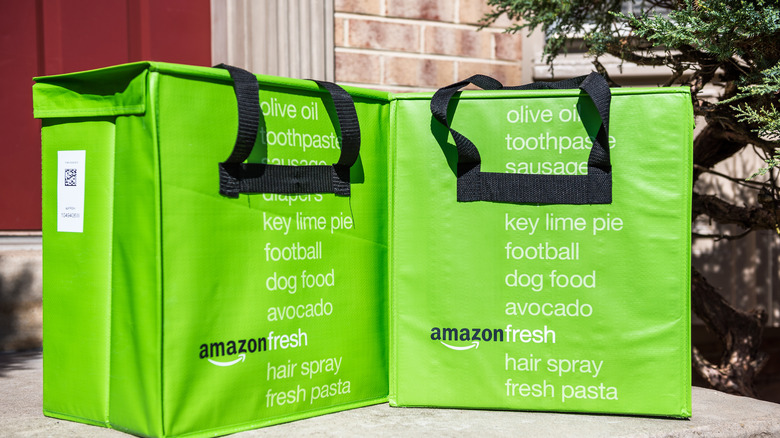For The Best Quality Store-Bought Ice Cream, Hit The Freezer Aisle Last
Summertime is prime ice cream season, but any time of year is the right time for a scoop or two. Whether it's piled into a waffle cone or squished into sandwiches, we can't get enough of the sweet stuff. In fact, the global ice cream market was valued at more than $73 billion in 2022 and is projected to increase to more than $100 billion by 2029, according to Fortune Business Insights. Ice cream is precious cargo, and anyone who's bought a container at the grocery store knows that once it's out of the freezer and in the cart that the clock is ticking. To make sure your next container of ice cream stays as cold as possible as you transport it from the store to your home freezer, make sure it's the last thing you select before you check out. It's a good idea to use insulated bags or a cooler in the car if you're buying frozen foods, but one of the best defenses you have against melted ice cream is to beat the clock.
Melted ice cream loses it's texture
Unlike frozen vegetables or even frozen dinners, ice cream is especially vulnerable to melting. This is because if it's out of the freezer for too long, it starts to melt and loses its creamy texture. Ice cream is a sweet mixture of sugar and milk or cream that is churned in a special machine that whips air into the mixture and breaks up any large ice crystals that can form. When it's allowed to melt and then re-freeze, all the air that was whipped in is lost and the liquid freezes into a block. While it still tastes like the chocolate chip or rocky road you bought, it'll be hard to scoop and it won't have the soft, creamy texture it once had. Even worse, it'll develop chunks of ice crystals.
Once you take a container of ice cream out of the store freezer, it starts to melt within five to ten minutes at room temperature, which is around 70 degrees Fahrenheit; in a hot car, it's much faster. If you're a little strategic in how you shop, you can delay when you put the ice cream in your cart until the very end, which minimizes the amount of time it'll be exposed to warm air.
Strategize your shop, leave the freezers for the end
A lot of grocery stores helpfully position their dessert freezers to one side of the store, so if you start shopping at the opposite end you can work your way toward the ice cream aisle. This way you can grab the ice cream right before you head for the checkout. But even if the aisles aren't set up that way, it's always a good idea to hit the frozen section of the grocery store last so that anything from the deep freeze — especially ice cream — stays frozen. As a nice bonus, since usually all the frozen foods are grouped together, you can choose all of your frozen veggies, fruit, and ice cream at the same time and they'll stay colder when they're grouped together in the cart.
When it comes time to bag, try to use a reusable insulated shopping bag for transporting your ice cream, which will prevent further melting. Also, pack all of your frozen things together and position the ice cream in the middle of a bag of frozen things to keep the container extra cold. It's also a nice option to have a cooler in the car if you'll be driving longer than a few minutes before you can get your ice cream back in the freezer. If you follow all these steps and head right home after the grocery store, your sweet treat should be in good shape for scooping once you get home.


